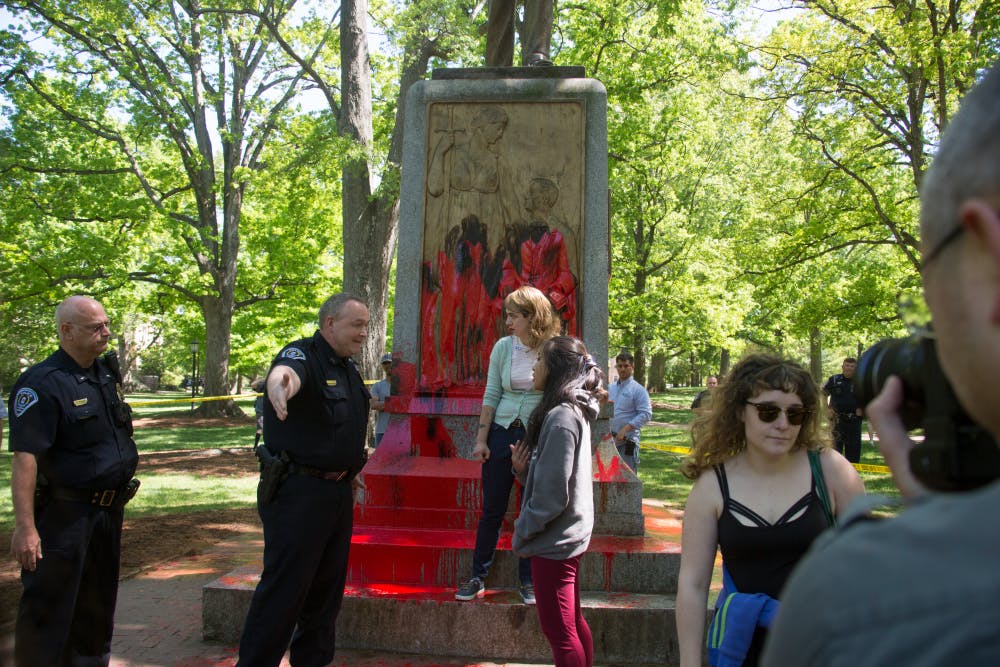Maya Little was arrested for painting the Confederate memorial Silent Sam red with paint and her own blood at a protest Monday. She was charged with defacement of a public monument and will have her first court date on May 7. Staff writer Suzanne Blake talked with the second-year doctoral student about the motivation behind her actions.
DTH: Tell me about the history of your involvement protesting Silent Sam.
ML: I have been involved as an organizer for the sit-in since September of 2017 after the 24-hour occupiers had their belongings confiscated and were told to leave by campus police. That includes being at the statue last semester every day to host the sit-in with our signs that provided context about the statue and its history and it being a white supremacist, racist monument.
DTH: Why did you paint the statue red yesterday?
ML: I smeared my blood and red ink on the statue because the statue was lacking proper historical context. This statue, Silent Sam, was built on white supremacy. It was built by white supremacists. It was built by people who believed that Black people were inferior and wanted to intimidate them. So these statues were built on Black blood. These statues symbolize the violence toward Black people. Without that blood on the statue, it’s incomplete, in my opinion. It’s not properly contextualized.
DTH: What were you hoping to accomplish yesterday?
ML: To have Chancellor (Carol) Folt and others to confront the real history of the statue, to confront the context and the history. We’re an academic institution. We have a history department. It’s inappropriate to have a monument on campus that doesn’t show the real history of the time period it’s a part of. Also because Chancellor Folt has not responded to calls to remove the statue since she’s been here. For the first two years that she was here, there was no state law against removing the statue — despite the fact that since 1968 there have been protests against the statue on campus. Not only that, she has not met with anyone in the sit-in. She has done everything in her power actually to keep the statue on campus by appointing an undercover cop to surveil, to intimidate and to gather information on students. I think that Chancellor Folt needs to respond. She needs to take responsibility and ownership. She needs to remove the statue and deal with the issue of white supremacy on this campus.
DTH: Did you anticipate being arrested?
ML: I did. I did not anticipate the, in my eyes, very aggressive response from campus police ... and this is again, when does Chancellor Folt respond? Not when students say, ‘I feel threatened, I feel in danger because of this statute.’ She responds when I put context in the statue. Within a minute after my arrest, they had called someone to power-wash the statue. In the course of that, when protesters stood in front of the statue, after I had put my ink and blood on it, campus police physically and very aggressively removed them from the statue. They also took our signs from our protest, which we’ve had for months and were not a part of my action, and destroyed them. So they destroyed the property of the sit-in. They destroyed signs that were about the context of the sit-in, and a lot of those signs specifically referred to incidents of police violence or police harassment of Black students and protesters.




